The official trailer for Pixar's Lightyear film has given fans a better look at the space ranger under the helmet.
Villainous robots, cat companions – one that's sure to join the long list of iconic Disney sidekicks – and that iconic green and white suit all feature prominently in the new footage. The trailer ends with confirmation of Lightyear's June 17 release date, which had previously been revealed in the movie's first teaser back in October 2021 .
We’re treated to a more comprehensive look at Chris Evans’ take on the titular character, too. The actor replaces Tim Allen in a role he’d famously voiced for more than two decades, though fans can now rest assured that Evans’ casting hasn’t taken away from the, ahem, buzz of the beloved Pixar franchise.
Check out the new trailer below:
While the anthemic tones of David Bowie’s Starman are used again throughout, this new footage does a better job of giving fans an idea of the story Lightyear will tell.
Now we know, for instance, that the movie will see Buzz working with Star Command to escape a planet on which he and his team of Space Rangers have been marooned. Taking the lead on a dangerous mission, audiences will find the character in a position of seniority (and by extension, responsibility) among his peers, rather than as a junior astronaut.
Incidentally, the likes of Keke Palmer, Dale Soules and Taika Waititi have all lent their voices to recruits working alongside Buzz, while frequent Pixar collaborator Peter Sohn breathes life into Sox, Buzz’s animatronic (and destined-for-the-toy-store) cat companion.
Several Zurg-like robots also make an appearance in this new trailer, suggesting that the famously evil Emperor – or at least a variation of – could have a hand in the Space Rangers’ unfortunate predicament. Check out a screen shot of Buzz battling one of these big baddies below:

It’s also been confirmed that Disney alumnus Michael Giacchino (known for his work on Ratatouille , The Batman and Spider-Man: No Way Home ) is on board to compose the score for Lightyear – so expect an awards-worthy soundtrack of galactic proportions.
Elsewhere in the new trailer, we're treated to more of the same eye-wateringly beautiful visuals (just look at the colors in that hyperspace sequence) and are given a taste of the customary Pixar humor fans can expect to enjoy from the studio's latest project.
Analysis: to Infinity and... theaters?
One of the most anticipated new movies of the year, Lightyear is on course to debut in theaters across the globe, rather than arriving immediately on Disney Plus .
Coincidentally, that will make the anticipated Toy Story origin story the first Pixar movie since Toy Story 4 to be released theatrically, after the global pandemic saw the likes of Soul , Onward and Luca head straight to Disney's streamer.
That being said, we’ve recently seen Disney reverse its decision to follow a theatrical release schedule with another of its upcoming projects. Turning Red had been destined for theaters in March, but the studio has since reversed its decision and will instead release the film exclusively on Disney Plus, much to the chagrin of cinemagoers.
Our guess, though, is that Lightyear will weather the storm. While the threat of Covid-19 hasn't yet gone away, tent-pole movies like Spider-Man: No Way Home have proven fans' willingness to return to cinemas en masse (if a movie is alluring enough, that is).
Chris Evans' star power, too, could be a big draw in getting bums on seats, while the ever-faithful call of nostalgia, particularly from a Toy Story perspective, may also convince Disney that keeping Lightyear on course for a theatrical release is a safe bet. We've got our Space Ranger fingers crossed, at least.
PlayStation VR 2: PSVR 2 specs, features, and everything you need to know
The PSVR 2 is the next-generation VR headset that Sony is currently working on. It will work exclusively with the PS5 games console and will follow in the footsteps of the original PlayStation VR headset, which launched back in 2016. The PlayStation VR 2 is due to launch towards the end of 2022, however, supply chain issues might mean it gets pushed back to 2023.
We’ve already found out a bunch of new things about the PSVR in 2022. A post on the PlayStation Blog revealed the official name of its headset, PlayStation VR2, as well as the official name of its new VR controller, PlayStation VR2 Sense controller.
At the CES 2022 tech expo, Sony provided more details about the headset. In another PlayStation Blog post , Sony also revealed what the PSVR 2 looks like. Sony has now also revealed what the PSVR 2 looks like. While similar to the design of the old headset, there are new features that will make it much more comfortable to wear for long periods.
What we do know is that Sony says the PSVR 2 will take VR gaming to "a whole new level" and that the headset is going to feature drastically improved specifications. These will allow "a greater sense of presence" so players can "escape into game worlds like never before".
Using the headset's new technology and the PlayStation VR2 Sense controller's haptic feedback and adaptive triggers, Sony believes it will be able to offer "a heightened range of sensations unlike any other", which sounds promising, to say the least.
Below, we’ve rounded up everything we know so far about the new VR headset from Sony, including what the VR headset might look like, the new games we’re looking forward to playing, a summary of the PSVR 2's specs that we know so far, and what features we can expect.
The sequel to Sony’s PSVR headset promises to provide a huge leap forward over the original PlayStation VR. Not only will the PSVR 2 take advantage of the PS5's more powerful hardware, but we now know that it has a significantly higher resolution display for each eye, faster refresh rates, a wider field of view, and improved tracking and input.
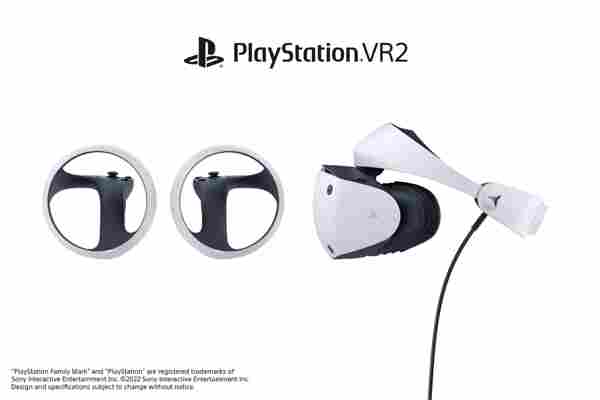
Rumors indicated that the PSVR 2 will include an OLED display that boasts a total resolution of 4000 X 2040 pixels (that’s 2000 X 2040 per eye and just slightly more than the Oculus Quest 2 ), a 110-degree field of view, foveated rendering (a technique that uses gaze tracking to only render certain parts of the image), and include some sort of sensory feature in the headset itself.
It turns out those rumors were spot on, as Sony has confirmed that the PSVR 2 does indeed offers 4K HDR, a 110-degree field of view, foveated rendering , and frame rates of 90/120Hz.
The headset also includes inside-out tracking, which means PSVR 2 tracks you and your controller through integrated cameras embedded in the headset itself. Your movements and the direction you look will be reflected in-game, without the need for an external camera.
The new sensory features of PSVR 2, as Sony calls it, combine eye tracking, headset feedback, 3D Audio, and the PSVR 2 Sense controller to create a deeper feeling of immersion. A single built-in motor in the headset will add an additional tactile element, that can replicate the player's pulse during tense moments, or the rush of objects passing by a player's head.
The addition of eye tracking will be particularly pleasing news for VR enthusiasts, as it lets the PSVR 2 track the motion of your eyes. Simply look in a specific direction and the headset will create an additional input for your game character. This results in a more intuitive and natural experience.
However, this eye tracking camera could also lead to delays and a high price tag for the PSVR 2. Recent reports stated that Sony has yet to finalize a deal with Tobii AB , the manufacturer of the eye tracking camera Sony is using in its headsets. Tobii's cameras are extremely powerful pieces of equipment and don't come cheaply. Its Eye Tracker 5 sells for about $230 / £230, and the original PSVR cost $399 / £349 at launch without any eye-tracking support built in. Throw in the 4K HDR OLED display, 120Hz max refresh rate, and improved controllers that have been advertised for the PSVR 2 and Sony's new headset could be significantly more expensive.
It's also worth noting that the PSVR 2 headset isn't wireless, but instead only requires one cable between the headset and the console to use.
Cut to the chase
PSVR 2 release date
We don’t know exactly when the VR headset will launch and there's been no official date from Sony at the time of writing. However, holiday 2022 seems like a likely bet (that's between November and December). This backs up rumors detailed in a recent report from Bloomberg.
Given that Sony is already struggling to output enough PS5s to meet demand, we might even see the PSVR 2 launch later than 2022 to keep production pipelines focused on the console. This would give Sony more time to expand the potential PSVR 2 player base (as the new headset will be exclusive to Sony’s latest console) and would help get the console in more people’s hands.
PSVR 2 price
Right now, we still don’t know how much the PSVR 2 will cost but we can look at other VR headsets to get an idea of what we could expect to pay for the new hardware.

Firstly we have the current PlayStation VR starter bundle that retails for $200 / £259 / AU$420. This is slightly cheaper than the price of the hugely popular Oculus Quest 2 which typically sells for £299 / $299 / AU$479 but the PSVR Starter bundle has gone through several price reductions and is several years old.
The original price for a full PSVR bundle was $499 (£399, about AU$650) however that’s considerably more than consumers may want to pay, especially if they have already shelled out on a PS5.
However, the price tag could make sense if Sony uses premium tech. For comparison, a “premium” VR headset currently on the market is the HTC Vive Pro , which retails for $800, £800, or around AU$1,045.
We imagine that Sony will aim for a price somewhere between the original and current price for the PSVR bundle if it wants to see the PSVR 2 succeed but we’ll have to wait and see. But its hands may be tied based on the cost of the components it wants to include in the more advanced headset. As mentioned above, the original headset didn't feature eye tracking and the camera that adds that functionality to the PSVR 2 is not cheap.
PSVR 2 controllers
The upcoming PSVR 2 controllers will be getting a significant performance and design upgrade . We also now know Sony's next-gen VR peripheral is called the PlayStation VR2 Sense controller.
These new controllers drop the design of the classic PS Move controllers from the original PSVR and instead resemble more typical VR controllers like Oculus Quest 2's Touch controllers.
The PSVR 2 controllers will feature baton-like handles with a plastic orb around them. They also make use of the same adaptive trigger features found in the current DualSense PS5 pads. This will allow for differing tensions on any given in-game action.
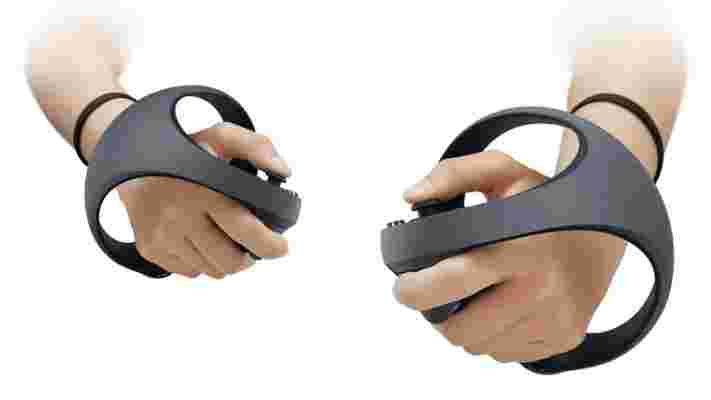
They’ll also feature haptic feedback and finger touch detection, letting a game know where your digits are resting without having to press a button. According to Hideaki Nishino , head of platform planning and management at PlayStation, these features mean you’ll be able “to make more natural gestures with your hands during gameplay.”
PSVR 2 specs
Sony revealed the full specs of the PSVR 2 at CES 2022, though we're still waiting to see what the headset looks like, including how much it weighs. Here's a breakdown of Sony's PSVR 2 specs:
| PSVR 2 specs | |
|---|---|
| Display Method | OLED |
| Panel resolution | 2000 x 2040 per eye |
| Panel refresh rate | 90Hz, 120Hz |
| Lens separation | Adjustable |
| Field of View | Approx. 110 degrees |
| Sensors | Motion Sensor: Six-axis motion sensing system (three-axis gyroscope, three-axis accelerometer)) |
| Cameras | 4 cameras for headset and controller tracking, IR camera for eye tracking per eye |
| Feedback | Vibration on headset |
| Communication with PS5 | USB Type-C |
| Audio | Input: Built-in microphone, Output: Stereo headphone jack |
Sony has also added a vent to the PSVR 2 to make playing in the headset a more comfortable experience. "One of the areas I wanted to focus on first was the idea of creating a vent in the headset to let air out, similar to the vents on the PS5 console that allows airflow," senior art director Yujin Morisawa wrote in a blog post . "Our engineers came up with this idea as a good way to allow ventilation and avoid having the lens fog up while players are immersed in their VR games".
The PSVR 2 is also slightly lighter, thanks to a slimmer design. Both those features should make it more comfortable to play in VR for longer.
PSVR 2 news and rumors
First look at the PSVR 2 headset's final design
Following its official announcement of the PSVR 2, Sony has now revealed what the new generation of hardware will look like . While similar to the original PSVR's design, Sony has made changes to bring it in line with the look of the PlayStation 5.
PSVR 2 specs officially revealed at CES 2022
Sony revealed the specs of the PSVR 2 at CES 2022 and also announced the official names of the headset and its next-gen VR controller: PlayStation VR2 and the PlayStation VR2 Sense controller. A new game is also in production, Horizon Call of the Mountain, which is a VR spin-off of the popular Horizon series by Guerilla Games.
PSVR 2 could start mass production soon
Sony’s next-gen virtual reality headset which is tipped to release this year could enter mass production in China soon. Hardware analyst Brad Lynch spotted that a well respected Chinese supply chain analyst shared the news that manufacturer Goertek will be in charge of producing the PSVR 2 headsets, and that mass production could start soon.
Our first look at the PSVR 2?
A patent filing from Sony could be giving us a first look at its PSVR 2 headset . While details are a little bare the patent discovered by DistroXR shows off a head-mounted display that bears a strong resemblance to the PSVR headset design, albeit with a few modern upgrades.
Patents are by no means an official confirmation though, so while there is a strong chance the PSVR 2 will look like what we see in the patent, we might also get something entirely different.
PSVR 2 could be backwards compatible
A new leak from ResetEra has suggested that the PSVR 2 headset will have access to a large launch library thanks to backwards compatibility - letting users play every current PSVR game on the new hardware.
We have to take every claim with a pinch of salt but honestly, we'd have been surprised if the PSVR 2 wasn't backwards compatible. Otherwise, players would be locked out of some of the best VR games and would have barely anything to play when the system launches.
No official PSVR 2 details in sight?
Sony has confirmed via the official PlayStation Blog that there won't be any PSVR 2 announcements during September 9, 2021's PlayStation Showcase. While plenty of new and announced PS5 games will make an appearance during the presentation, PSVR 2 fans will just have to wait a bit longer before the future of VR is revealed for Sony's current-gen machine.
PSVR 2 could have a second screen bolted on the front
According to a patent spotted in August 2021, the PSVR 2 might have a second screen on the front of the headset.
The patent (first spotted by VR Focus ) describes how an external, front-mounted display could help those watching a VR player understand what the headset wearer is seeing in real-time – that’s one way to get around the isolating VR experience and sure would add an even more cool sci-fi look to Sony's headgear.
Is Sony making inroads to social VR?
A trademark application , submitted in July 2021, suggests Sony might be considering bringing back its PlayStation Home service – an ill-fated social hangout space that was on the PlayStation 3.
Part chatroom, part Sims-like design app, PlayStation Home was closed in 2015. But the trademark hints at its return and, given the rise of social VR spaces, we wouldn’t be surprised if this is going to play a big part in Sony’s move into social gaming and virtual reality in the future.
PSVR 2 could take a step back from VR-only titles
According to a report from YouTube channel PSVR Without Parole , PSVR 2 games could shift from VR-exclusive experiences . Instead, Sony might focus on "hybrid" titles that can be played with or without a PSVR 2 headset.
The report explains that PSVR 2 compatible titles could have two versions: the more traditional TV-based experience as well as a version that works in VR. This would mean players won't have to download two versions of the game, and can essentially choose which version suits them best.
PSVR specs could be "even better" expected
The PSVR 2 could have “even better” specs than what we’ve previously heard, according to tech experts Digital Foundry.
In an episode of Digital Foundry Weekly , host and technology editor Richard Leadbetter said “we’ve seen some leaked [PSVR 2] specs and it looks good,” but went on to add that “we’ve seen some other specs which haven’t been leaked which make it look even better.” We're still waiting to hear more about the PSVR 2's specs, but it's rumored to have a higher resolution screen than the Oculus Quest 2, a dial for lens adjustment, gaze tracking, and a motor within the headset itself that might be used for haptic feedback. It could also use OLED panels for each eye as opposed to LCD.
Haptic feedback on the horizon for PSVR 2?
A recent patent unearthed by LetsGoDigital suggests that haptic feedback could be a feature in a future PSVR headset. The patent was filed all the way back in 2016 but was only granted in November 2020 and primarily explores ways in which VR or AR headsets could be made more comfortable to wear.
The patent suggests multiple sensors - whether they’re pressure, motion, or stretch sensors - built into the headset which can send signals indicating whether or not it’s being worn properly. If the headset isn’t on right, the user might receive tips to fix it, with feedback displayed on-screen or by speech through built-in speakers.
Haptic feedback in the PSVR 2 would tie it in neatly with the capabilities of the PS5's DualSense controller but as with all patents, there’s no guarantee anything described within this one will ever make it into a product Sony releases.
Motion Sickness Reduction Patent
A patent filed in 2019 and published on WIPO in 2020 points to efforts from Sony to reduce motion sickness in what could be a PSVR 2. The patent describes “a VR sickness reduction system, a head-mounted display, a VR sickness reduction method, and a program with which it is possible to further reduce VR sickness.”
Finding that much motion sickness in VR is caused by “a difference between the movement of the viewpoint and the user’s feeling in a situation where a moving image showing the appearance from the viewpoint is displayed on the display”, the patent posits a potential solution which appears to involve vibrations or oscillations.
The patent reads “An HMD (12) is provided with a display unit (38), which is disposed in front of the eyes of a user when the user wears the HMD (12). A shaking unit (42) can shake the head of the user wearing the HMD (12).
An entertainment device (14) causes the display unit (38) to display a moving image representing a view as seen from a viewpoint. The entertainment device (14) controls the shaking of the shaking unit (42) in accordance with the acceleration condition of the viewpoint for the moving image displayed by the display unit (38). ”
The overall aim, it would seem, is to better unite what the player is seeing in the PSVR headset with what they’re feeling outside of it. Patents are never any guarantee of a final product, but this could be an insight into problems Sony is looking to overcome in any future iterations of the PSVR headset.
Could PSVR 2 be wireless? LetsGoDigital has unearthed a patent for the next-generation virtual reality hardware that suggests that PlayStation VR 2 will be wireless, boasting built-in cameras and a transparency mode that would give you the ability to see the world around you through the headset's screens.
This patent details a virtual reality headset with three built-in cameras - two at the front and one at the back - alongside motion detection technology. If that's not enough, it looks like the PSVR 2 headset could also be wireless, and boast a built-in power supply, microphone, and its own video/audio signal source. In other words, no more plugging in headphones for sound or cables for imagery, with speakers built-in.
This is a big change from the current PSVR headset that is wired, and lacks a built-in speaker and microphone, although the actual look of the potential PSVR 2 headset doesn't look far off its predecessor if the patent proves indicative of industrial design.
Good news for glasses wearers? According to a published patent (spotted by Upload VR ), Sony is working on "prescription glasses with eye gaze tracking and electro-optical signaling to an HMD".
These Sony developed prescription glasses would be custom-designed for the wearer and gaze would be able to be detected by the VR headset via an encoded sensor. In other words, glasses-wearers could use VR much easier. We don't expect these glasses to come cheap, but the implementation of eye gaze software does mean we might see it arrive in the PSVR 2.
A new OLED display
At the ‘Sony Technology Day’, the company revealed it's been working on a new head-mounted display (HMD) that uses OLED microdisplay technology to deliver even more realistic visuals. There's been no confirmation this is planned to be added to the PSVR 2. But what's interesting is that as well as improving the display, the new HMD also includes low-latency compensation, which means it should stop users from feeling motion sick, which is a common complaint about VR gaming.
Windows 11 22H2 Update 'Sun Valley 2': everything we know so far
Since its launch in November 2021, Microsoft has been hard at work on the next big update to Windows 11 , tentatively called Sun Valley 2, due for later this year.
While a February update was recently released, showcasing the return of Windows Media Player, and the ability to preview Android apps in the Microsoft Store, another update is already in testing that brings better 'Open With' features and more.
With the company's effort to bring substantial features at a faster pace, compared to the six-month schedule that Windows 10 had, we may see Sun Valley 2 arrive sooner than later.
As we begin to build a picture of what to expect, here is everything we know so far about the first major update for Windows 11.
Cut to the chase
Windows 11 22H2 ‘Sun Valley 2' release date
Right now there is no confirmed release date for the Windows 11 22H2 ‘Sun Valley 2' update. Microsoft’s release schedule for Windows 11 updates is now once a year, compared to two a year with Windows 10 previously.
There have already been plenty of improvements in the Windows Insider channels, which allows users to test features in development. But it looks like Microsoft is rolling all of these into the first major update of Windows 11.
While the operating system was released in November 2021, it was announced in June, which would be a good time to release Sun Valley 2 with some tentpole features.
Windows 11 22H2 ‘Sun Valley 2' speculation
After months of speculation, Microsoft confirmed the '22H2' name in a recent update, released to all users in March 2022.
The codename for this update is ‘Sun Valley 2’, which is unlikely to be its release name. This is an internal codename for parts of the next version of Windows 11 which is being worked on and has been outed to the public by way of leaks from those with insider knowledge of Microsoft’s workings.
As Windows 11 was a significant upgrade from Windows 10, such as a refreshed look, a redesigned Microsoft Store, and the return of widgets, Sun Valley 2 looks to build upon Windows 11 but also improve certain aspects that users have been sending feedback over.
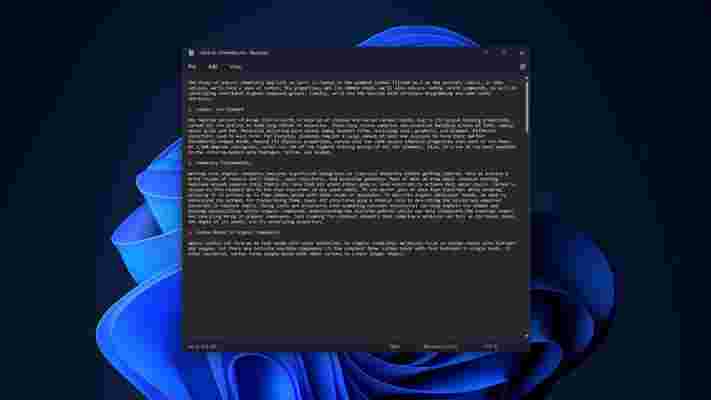
In the Insider builds, users have spotted more apps gaining the new Fluent Design, which is the overall look for Windows 11. These apps feature rounded corners, lesser reliance on the Ribbon view that's been across the operating system since Windows 8, and a more vibrant color scheme. There have also been features announced last year that have yet to come to every Windows 11 user.
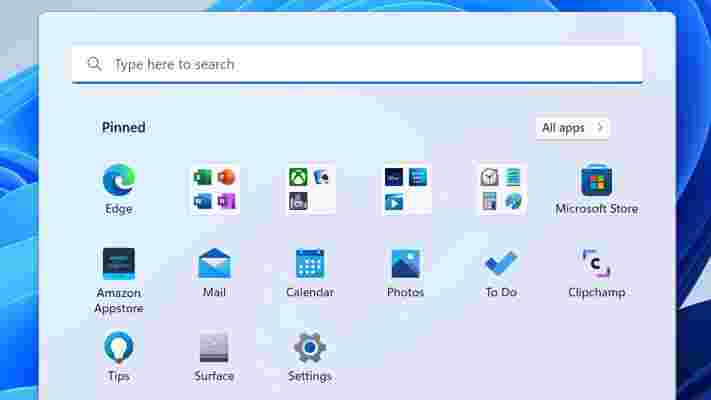
Android apps coming to Windows 11
Testers in the Beta Channel who have Windows 11 Build 22000.xxx and above will be able to try out the redesigned Focus feature , but a February 2022 update is out, where you can already test out Android apps.
These originate from Amazon's App Store instead of Google Play, as every app is tested and approved by Amazon, similar to Apple's effort with the App Store.
These will run similar to how iOS apps run on macOS, with apps such as TikTok and Instagram running in a window.
However, there are already other ways to install Android apps directly, without going through the Microsoft Store.
New OS features for Windows 11 22H2 ‘Sun Valley 2'
This first update to Windows 11 looks to be built on feedback from users, alongside more refinements that Microsoft didn't have time to include in the first release in November.
One feature that's been divided by users has been the taskbar . The start menu has seen a redesign in Windows 11, but while the new look has been a positive, some features that were present in Windows 10, cannot be found here.
In Sun Valley 2, the taskbar looks to be bringing back some features and listening to some feedback, with drag and drop coming back to the taskbar .
Other OS improvements are more apps from Microsoft that will be refreshed with the Fluent Design language that's across Windows 11. Notepad is one of the examples for Sun Valley 2, gaining dark mode and a re-arranged menu bar.
While Paint is another app to gain from a refreshed look, Microsoft surprised many at the end of 2021 by bringing back Windows Media Player .
It will be replacing Groove Music, an app that debuted back in Windows 8 in 2012. This will be available in the Microsoft Store, but will be scheduled to appear as the default app to play media files once Sun Valley 2 is available to everyone.
Windows 11 updates look to already be about more than visual flair, and Sun Valley 2 is set to be no exception. There will be several changes underneath that aren’t user-facing, as always, and a number that will be.
But from what Microsoft is working on and showcasing through the Insider program, it's clear that the company wants to update the apps of Windows 11, not just the front-facing features.
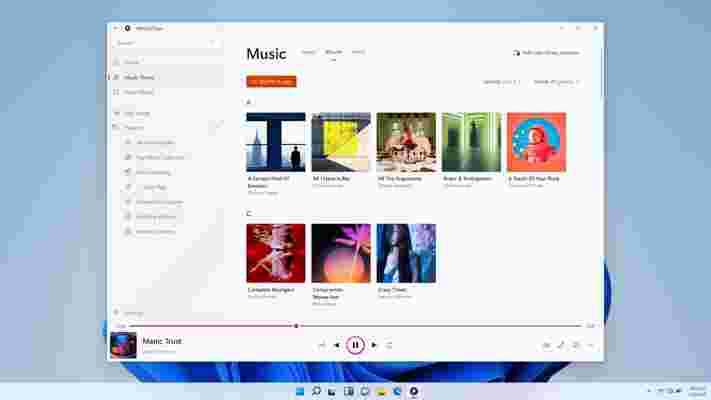
How to test the Windows 11 22H2 Update before launch
Before Microsoft pushes out any big update to Windows 11, it passes through the various channels in the Windows Insider Program. There are various channels in the Insider Program which relate to how far ahead of time you’ll be able to test new features, with the most cutting edge being the ‘Dev Channel’, targeted at the most technical users.
The ‘Dev Channel’ was the first place that Sun Valley started to appear, with a 2200 build number appearing in November 2021. Other app updates to Paint and Windows Media Player soon appeared in the 'Beta Channel'.
These will be reliable builds tied to a future release with updates validated by Microsoft. Closer to launch, Windows 11 22H2 will hit the ‘Release Preview Channel’ which is the most stable of all in the Insider Program. Builds released to this channel are supported by Microsoft.
If you’re not yet in the Windows Insider Program and you’d like to start testing future updates early you can enroll right from the Settings app on your PC. Head to the ‘Update & Security section, then select ‘Windows Insider Program’ and choose the channel you want to join. You will then begin receiving updates through ‘Windows Update’ on your PC corresponding to the channel you joined.